# Nostalgic Programming: My Journey from Cereal Boxes to Code
Written on
Childhood Inspirations in Logic
Long before I delved into programming, I was introduced to concepts of logical reasoning during my formative years. Just for fun, I decided to recreate a childhood project that I made with my sister, which involved a cereal box and some knitting needles. This memory, whether inspired by a children's TV show or a book, dates back to the 1970s and represents one of my earliest encounters with logic.
What was this creation, you ask? The idea was to use the "cardboard computer" to pose questions like, “Who plays a musical instrument and enjoys cats?” The answers would be indicated by the knitting needles left in place, with the falling cards revealing the results. Of course, it wasn't the most practical device, as the number of knitting needles and cards you could utilize was quite limited. Plus, modifying the data was no easy feat!
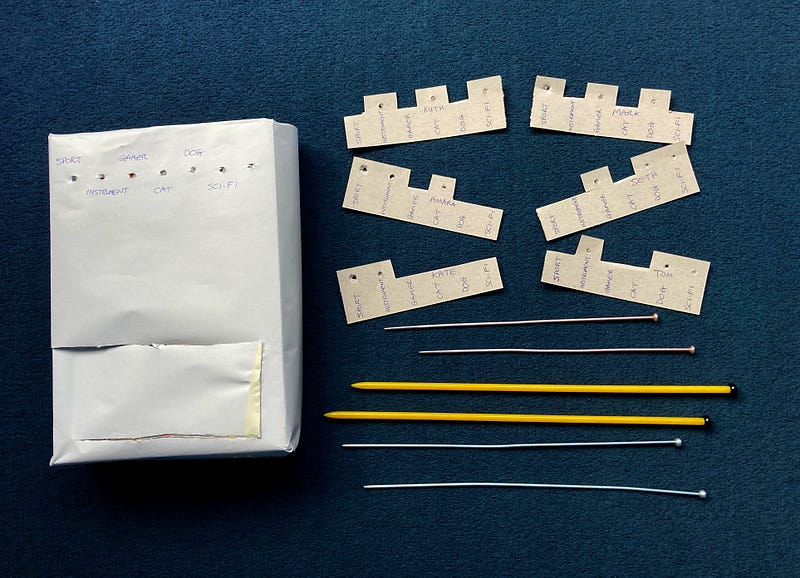
Reconstructing the Cardboard Computer
Materials Needed
- Cereal box
- Six cards (approximately 6 x 2.5 inches)
- Six knitting needles (preferably on the thinner side)
Step 1: Formulate Yes/No Questions
In the 1970s, we often asked questions like, “Are you a boy?” or “Do you have brown eyes?” Here are the questions I came up with: - Do you play a sport? - Do you play a musical instrument? - Do you enjoy video games? - Do you have a cat? - Do you have a dog? - Are you a fan of sci-fi shows?
Step 2: Modify the Cereal Box
Begin by cutting off the top of the cereal box. Create six holes spaced 1 inch apart near the top for the knitting needles. Don’t forget to cut a door at the bottom to retrieve the cards later. Write short versions of the questions next to each hole.
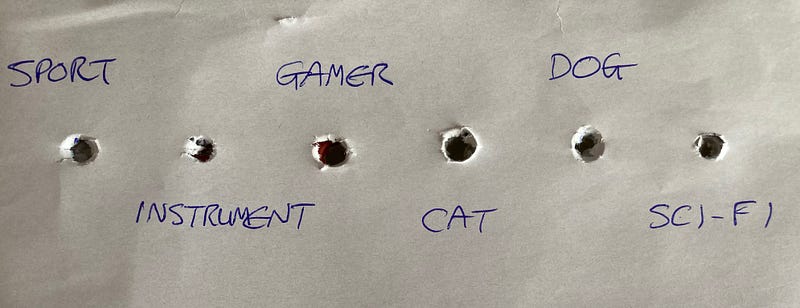
Step 3: Prepare the Cards
On the long edge of each card, punch holes 1 inch apart for the knitting needles. Write the abbreviated questions beside each hole to match the ones on the cereal box. Label the person's name on the card and "program" their answers by cutting out the area around the hole for "yes" responses, while leaving it intact for "no" answers.
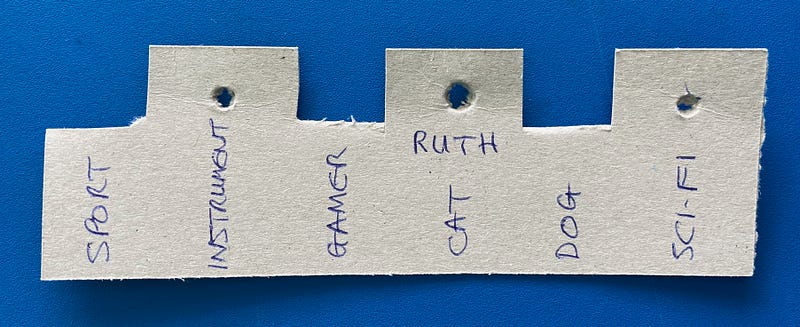
Step 4: Assemble the Cards
Stack the cards neatly and place them inside the box, then insert the knitting needles through the designated holes.
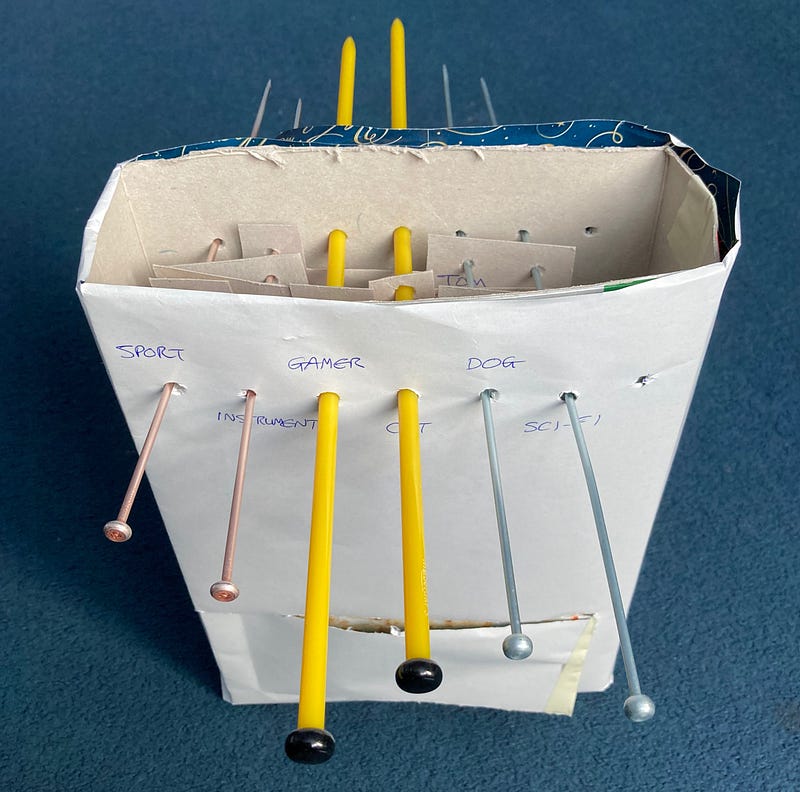
Step 5: Using the Cardboard Computer
Select two or three characteristics of interest. Keep the corresponding knitting needles in place and remove the others. The cards that meet all your criteria will fall out for you to access through the door. (A gentle shake may be necessary!)
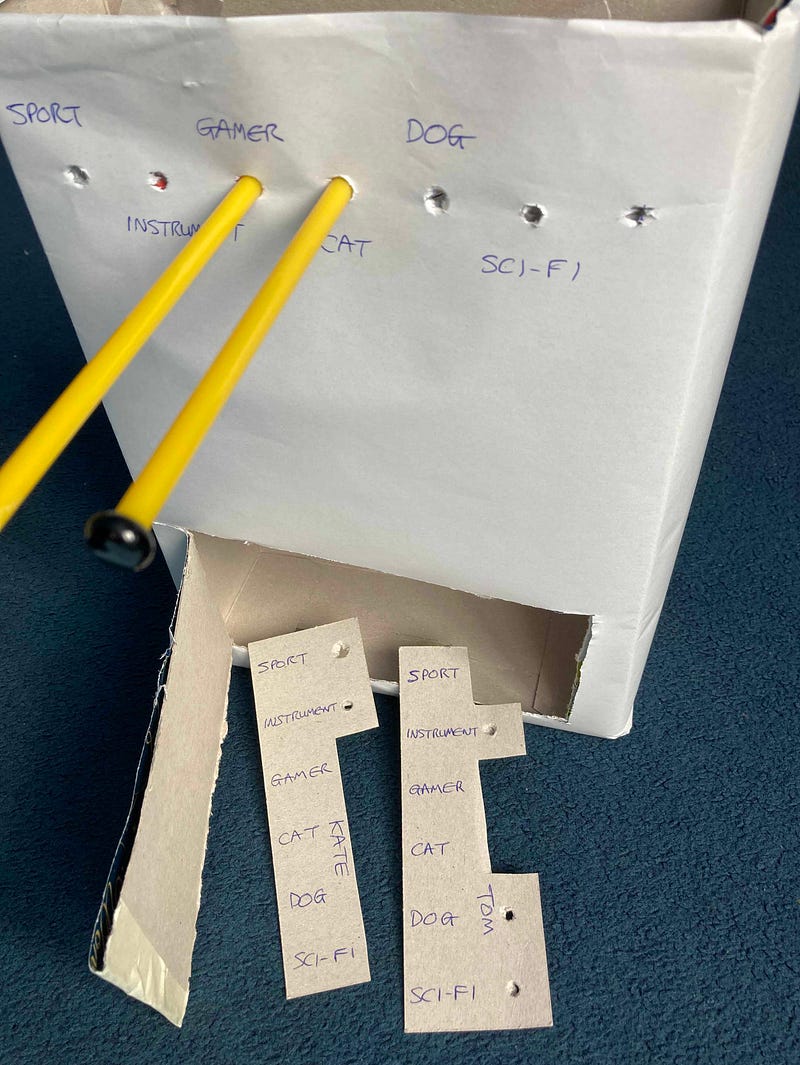
Reflections on the Journey
I must admit, it took me some time to recall how to recreate this project. Initially, my approach yielded unhelpful results, showing all individuals with any of the selected traits rather than those who possessed all of them. It has been a delightful experience to revisit this childhood endeavor from over four decades ago. I only wish I could trace the original inspiration behind it.

Upcoming Adventures in Programming
Stay tuned for my next article, where I'll discuss the evolution of my programming journey through the use of programmable calculators in the 1980s.